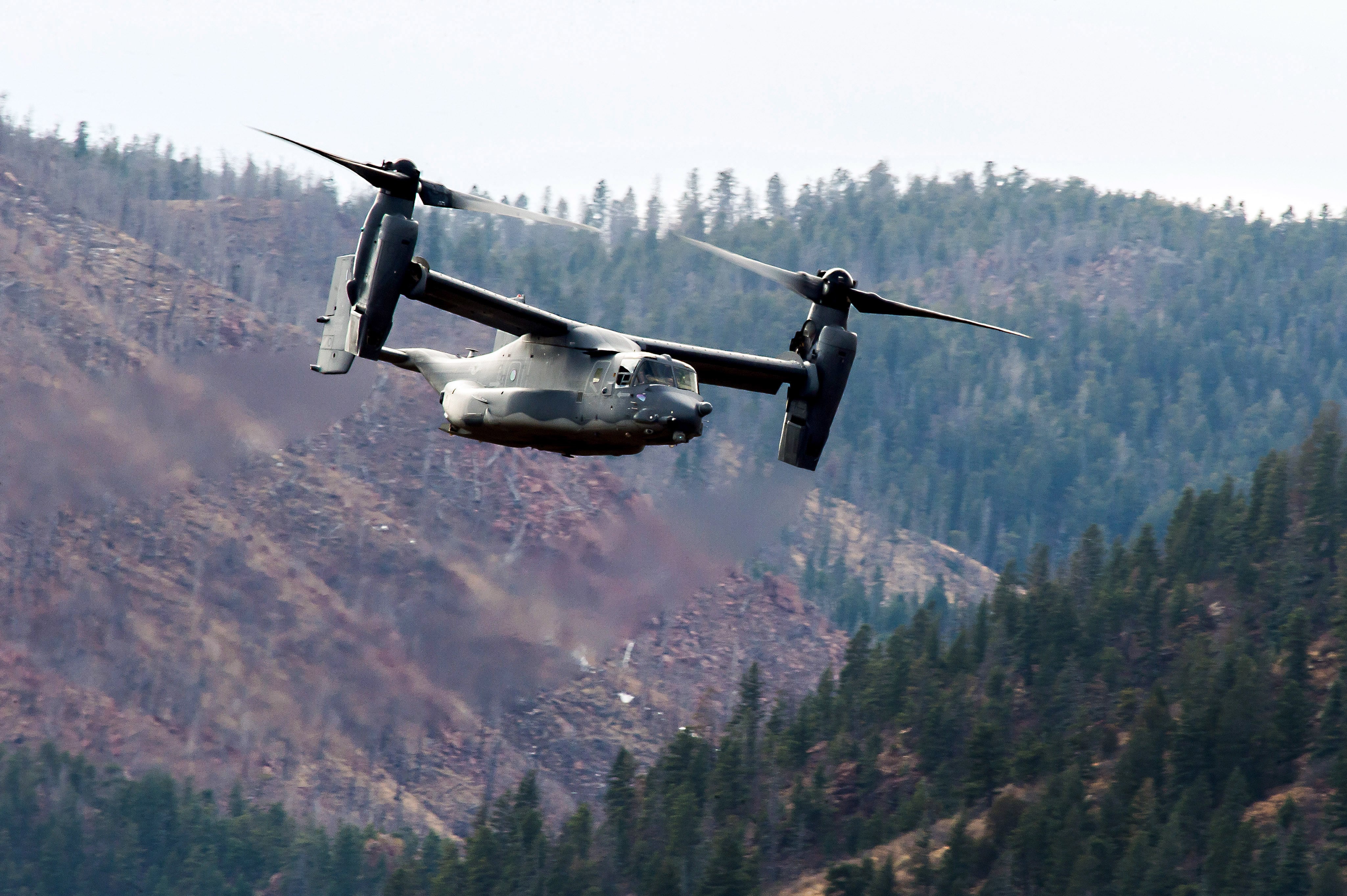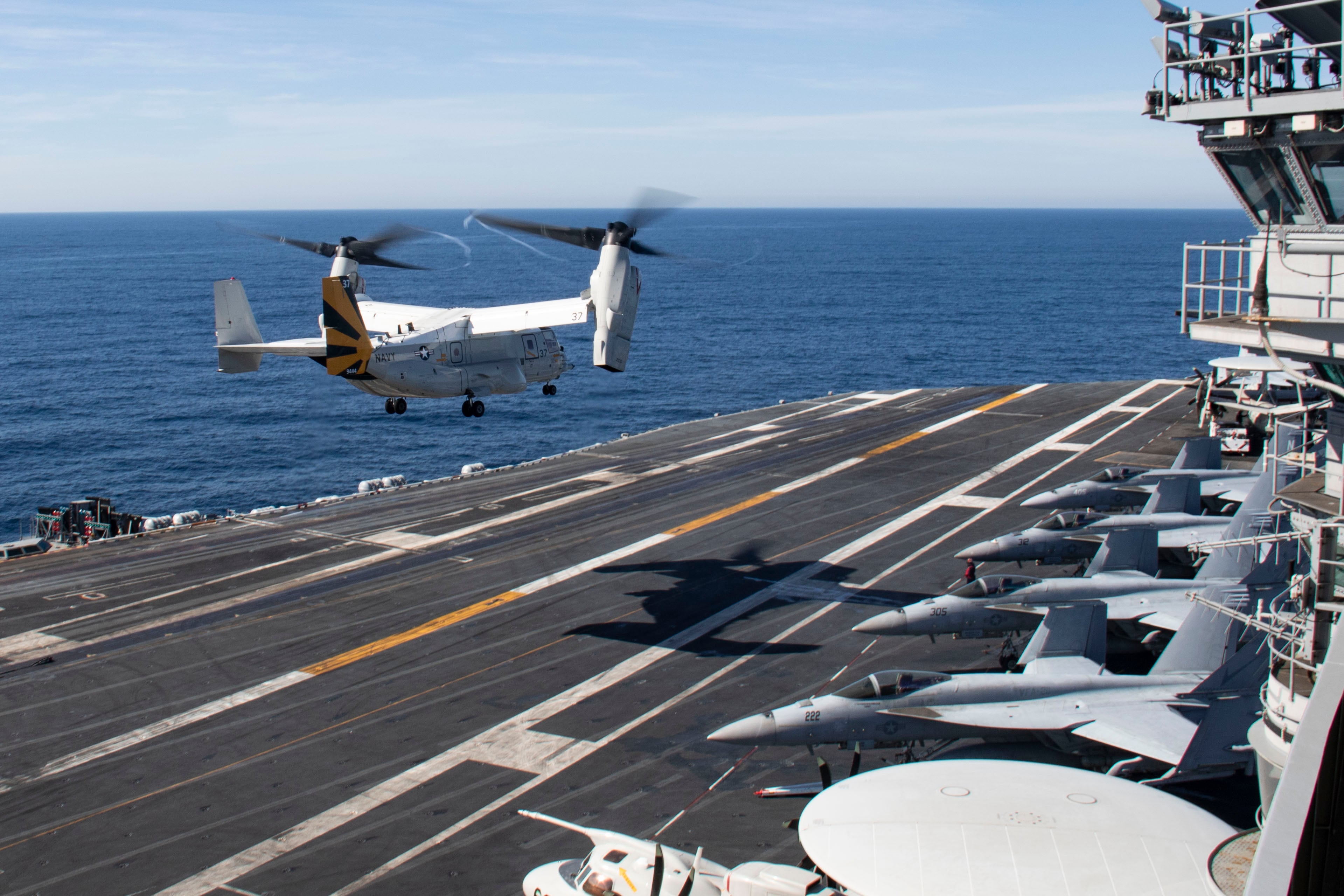The Navy’s small, C-2 Greyhound fleet is picking up additional air time and surging to support aircraft carriers in the Pacific, as all V-22 Ospreys remain grounded following a fatal Air Force crash in Japan last year.
The Navy’s CMV-22 Osprey, tapped to replace the aging C-2 Greyhound to fulfill the carrier onboard delivery mission to ferry personnel, mail and priority cargo from land to an aircraft carrier’s deck, were grounded following a November crash that killed nine airmen.
It remains unclear when Ospreys will fly again.
As a result, Greyhounds from Fleet Logistics Support Squadron 40 are surging to fill in gaps due to the Osprey’s absence, according to Naval Air Forces.
It’s the only C-2 Greyhound squadron, and is equipped with 15 aircraft.
Fleet Logistics Support Squadron 40 is providing “service to support logistics and personnel transfers on the East and West Coasts, as well as deployed aircraft carriers in U.S. 5th and 7th Fleets,” according to a Naval Air Forces spokesperson.
RELATED

“Lucky for the Navy the C-2 Greyhound is still available,” Air Boss Vice Adm. Daniel Cheever said at the WEST 2024 conference in February.
Cheever said the loss of the Osprey fleet had had “limited operational impacts at this point, but there are still operational impacts.”
“And as you look into the future, significant operational impacts,” he added. “That’s the journey we’re on, and we need to make it a safe and effective platform moving forward.”
A Naval Air Forces spokesperson did not respond to a request for comment from Navy Times by deadline regarding long-term operational impacts of the Osprey’s absence.
Despite the Osprey’s uncertain future, Navy officials said there is “no change” in its original plans to retire the C-2 Greyhound by 2026. The aircraft have been in use for 60 years.
The Air Force said this month it knows what occurred to cause the November Osprey crash, but that it doesn’t know why the failure happened.
The crash marked the fourth in the last two years, resulting in the deaths of at least 13 American troops.
None of the fatal crashes have involved the Navy’s Ospreys, which first arrived to the fleet in 2020 and deployed with carrier air wings in 2021.
RELATED

The Osprey is a tiltrotor aircraft designed to take off and land as a helicopter, but fly forward as an airplane. The Marine Corps, which operates a fleet of more than 300 of the aircraft, first started acquiring their variant of the aircraft in 1999.
The Associated Press previously reported that the military services are poised to brief Defense Secretary Lloyd Austin on Friday to lay out their plans to get the Osprey fleet back flying. The AP reported that it remains unclear when Austin would make a decision on the matter.
A defense official familiar with the V-22 program told the Associated Press that none of the U.S. Ospreys would return to flight until Japan has had an opportunity to weigh in on the military’s plan. Japan has also grounded its fleet of 14 Ospreys.
The Associated Press contributed to this report.




